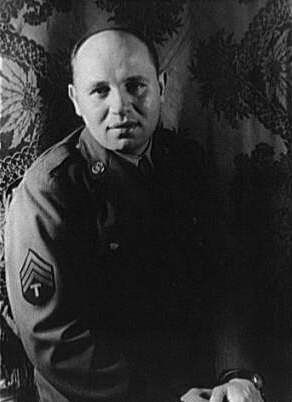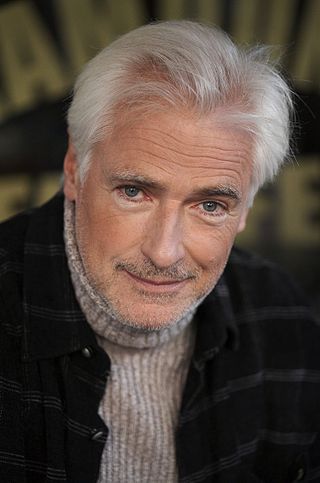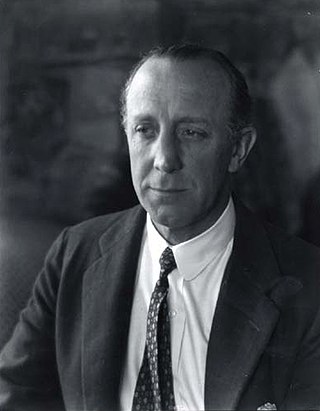Related Research Articles

Romare Bearden was an American artist, author, and songwriter. He worked with many types of media including cartoons, oils, and collages. Born in Charlotte, North Carolina, Bearden grew up in New York City and Pittsburgh, Pennsylvania, and graduated from New York University in 1935.

Max Ernst was a German painter, sculptor, printmaker, graphic artist, and poet. A prolific artist, Ernst was a primary pioneer of the Dada movement and Surrealism in Europe. He had no formal artistic training, but his experimental attitude toward the making of art resulted in his invention of frottage—a technique that uses pencil rubbings of textured objects and relief surfaces to create images—and grattage, an analogous technique in which paint is scraped across canvas to reveal the imprints of the objects placed beneath. Ernst is noted for his unconventional drawing methods as well as for creating novels and pamphlets using the method of collages. He served as a soldier for four years during World War I, and this experience left him shocked, traumatised and critical of the modern world. During World War II he was designated an "undesirable foreigner" while living in France.

Sir Antony Mark David Gormley is a British sculptor. His works include the Angel of the North, a public sculpture in Gateshead in the north of England, commissioned in 1994 and erected in February 1998; Another Place on Crosby Beach near Liverpool; and Event Horizon, a multipart site installation which premiered in London in 2007, then subsequently in Madison Square in New York City (2010), São Paulo, Brazil (2012), and Hong Kong (2015–16).

Honoré-Victorin Daumier was a French painter, sculptor, and printmaker, whose many works offer commentary on the social and political life in France, from the Revolution of 1830 to the fall of the Second French Empire in 1870. He earned a living producing caricatures and cartoons in newspapers and periodicals such as La Caricature and Le Charivari, for which he became well known in his lifetime and is still remembered today. He was a republican democrat, who satirized and lampooned the monarchy, politicians, the judiciary, lawyers, the bourgeoisie, as well as his countrymen and human nature in general.
Paul Jenkins was an American abstract expressionist painter.

Ellsworth Kelly was an American painter, sculptor, and printmaker associated with hard-edge painting, Color field painting and minimalism. His works demonstrate unassuming techniques emphasizing line, color and form, similar to the work of John McLaughlin and Kenneth Noland. Kelly often employed bright colors. He lived and worked in Spencertown, New York.

Sam Gilliam was an American abstract painter, sculptor, and arts educator. Born in Mississippi, and raised in Kentucky, Gilliam spent his entire adult life in Washington, D.C., eventually being described as the "dean" of the city's arts community. Originally associated with the Washington Color School, a group of Washington-area artists that developed a form of abstract art from color field painting in the 1950s and 1960s, Gilliam moved beyond the group's core aesthetics of flat fields of color in the mid-60s by introducing both process and sculptural elements to his paintings.
Sir Richard Sheridan Patrick Michael Aloysius Franklin Bowling(né Richard Sheridan Franklin Bowling; born 26 February 1934), known as Frank Bowling, is a British artist who was born in British Guiana. He is particularly renowned for his large-scale, abstract "Map" paintings, which relate to abstract expressionism, colour field painting and lyrical abstraction. Bowling has been described as "one of Britain’s greatest living abstract painters", as "one of the most distinguished black artists to emerge from post-war British art schools" and as a "modern master". British cultural critic and theorist Stuart Hall situates Bowling’s career within a first generation, or “wave” of post-war, Black-British art, one characterised by postwar politics and British decolonisation. He is the first black artist to be elected a member of the Royal Academy of Arts.
James Edward Grant was an American painter and sculptor active from the late 1950s into the early 1970s. Best known for his sculptural work in plastics, this work by no means defined him but was rather a natural endpoint of an exploration into increased dimensionality—starting from abstract canvases, moving through collages and bas-reliefs until the work finally came off the wall in sculptural form.
Reginald Case was an American artist who made American Folk Art collages and Hollywood iconographic mixed-media assemblages and sculptures.

Alexander Kaletski is an American contemporary artist. Kaletski became famous with Cardboard paintings he created by using cardboard boxes he finds on the streets of New York. He works in the varieties of medias and styles. Kaletski makes oil paintings, collages, sculptures and videos.
Pietro Lazzari was an Italian-American artist and sculptor. He is known for his sculptures, paintings, murals, illustrations, and printmaking.

Elena Petrovna Skuin was a Soviet, Russian–Latvian painter, watercolorist, graphic artist, and art teacher. She lived and worked in Leningrad and was a member of the Leningrad Union of Artists.She is regarded as one of representatives of the Leningrad school of paintingand is most famous for her still life paintings.

Paul Hampden Dougherty was an American marine painter. Dougherty was recognized for his American Impressionism paintings of the coasts of Maine and Cornwall in the years after the turn of the 20th century. His work has been described as bold and masculine, and he was best known for his many paintings of breakers crashing against rocky coasts and mountain landscapes. Dougherty also painted still lifes, created prints and sculpted.

Vitaly Ivanovich Tulenev was a Soviet Russian painter, watercolorist, graphic artist, art teacher, Honored Artist of the Russian Federation, lived and worked in Saint Petersburg, regarded as one of the leading representatives of the "left" wing of the Leningrad school of painting.
Robert Amft was a painter, sculptor, photographer, designer born in Chicago.

Winston Branch OBE is a British artist originally from Saint Lucia, the sovereign island in the Caribbean Sea. He still has a home there, while maintaining a studio in California. Works by Branch are included in the collections of Tate Britain, the Legion of Honor De Young Museum in San Francisco, California, and the St Louis Museum of Art in Missouri. Branch was the recipient of a Guggenheim Fellowship in 1978, the British Prix de Rome, a DAAD Fellowship to Berlin, a sponsorship to Belize from the Organization of American States, and was Artist in Residence at Fisk University in Tennessee. He has been a professor of fine arts and has taught at several art institutions in London and in the US. He has also worked as a theatrical set designer with various theatre groups.
Art of the Olympians (AOTO) is an organization and program of Olympian and Paralympian artists that promotes the Olympic ideals of values, integrity, character, respect, honor, and work ethic through exhibitions and educational programs. It puts on traveling exhibitions, runs workshops, organizes talks at schools, to show and discuss the connection between sport, art, and the Olympics. AOTO previously operated a museum.
Simone Fattal is a Lebanese-American artist.
Lucia Hierro is a Dominican American multimedia artist known for soft-assemblage, painting, sculpture, and digital media collages that represent the intersectionality between Dominican American identity, capitalism, and community through a culturally relevant lens. Her most notable works infuse "bodega aesthetics" with pop art, minimalism and Dutch still life styles. She has a studio in South Bronx.
References
- ↑ "Queen's Birthday Honours". The Daily Telegraph . 12 June 2004.
- ↑ "Phillips presents the works of Llewellyn Xavier at its New York gallery" (Press release). Phillips. 21 December 2015. Retrieved 22 March 2017.